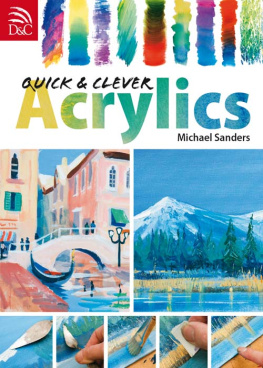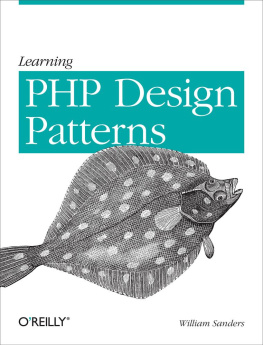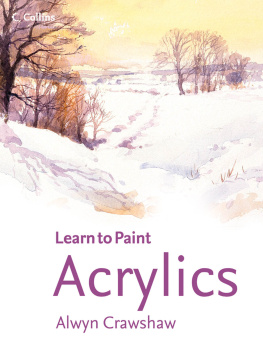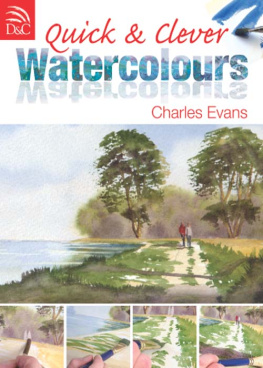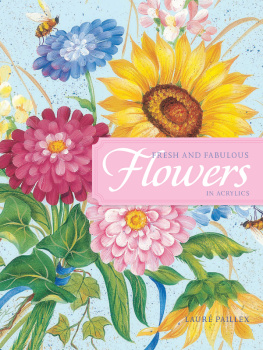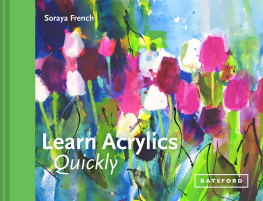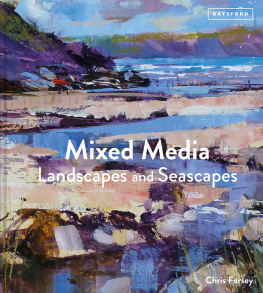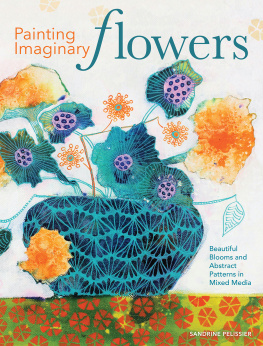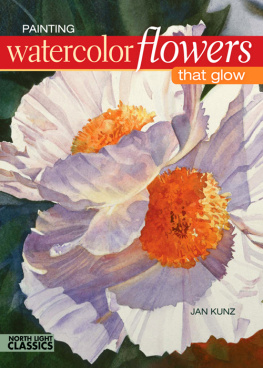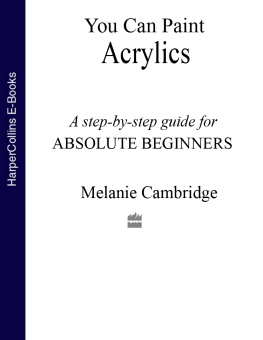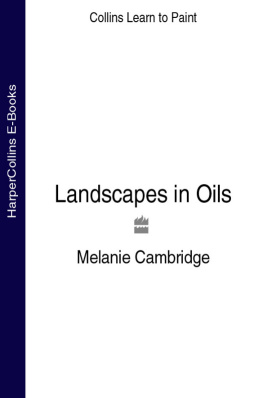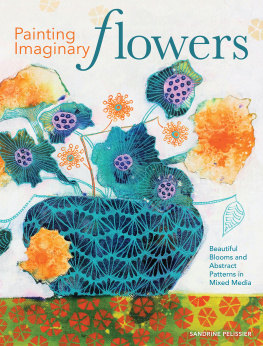INTRODUCTION
STARTING WITH ACRYLICS
Beginning your first real acrylics painting can be a little daunting, a bit like getting on a bicycle for the first time; all wobbly and hesitant. The difference is, with painting it does not hurt so much when you make a mistake! I would not worry too much about the occasional artistic disaster. You do not have to show your work to anyone else if you do not want to; it will be between you and me! Mistakes are all part of the learning process, and the important thing is to keep practising.
SO, WHY ACRYLICS?
I have been using acrylics ever since I went to art college in the sixties. You have to enjoy working with a particular material, and feel confident that you can make adjustments as you go along. For someone starting out in painting this is even more important, and acrylics are the most forgiving and versatile of all the materials available.
Acrylics are quick drying, so you do not have to wait for days before applying the next layer; and you can simply paint over your mistakes. There is no need for smelly solvents either; everything cleans with water.

WHAT IS ACRYLIC PAINT?
All paints consist of a pigment (the colour) and a binder that holds the paint together.
Basically, all paints have a similar range of pigments in them; it is only the binder that makes it a watercolour, an oil paint, or an acrylic. The binder in acrylic paint is a polymer, which is a kind of liquid plastic. The paint is mixed with water and when the water evaporates the paint sets to become a very permanent, flexible layer, which can be wafer thin, or as thick as you want. It dries quickly, is not washed off by other paint being put on top, and can be made to dry slowly, or made more fluid, by the addition of retarding or flow-improving mediums. This versatility gives acrylics a huge advantage over watercolours, which can easily be washed off when other colours are brushed on top, and over oil paint, which may take up to a week to dry.

Acrylics are flexible and versatile!
OPAQUE OR TRANSPARENT
Another advantage is that you can use acrylics in many different ways. If you like the look of oil paintings and would like to work with thick, opaque paint to make textured marks, you can. If you admire the delicacy and softness of watercolours you can use your acrylics in a transparent way, with thin washes.

Acrylics can be opaque and textural

or they can be thin transparent washes.
BE ACRYLIC CONFIDENT
Have you ever fancied having a go at painting, or seen a picture and thought Id like to be able to paint that? Have you tried and given up because you felt you were not artistic enough? Perhaps you have been put off by the apparent complication, the strange-sounding jargon, or maybe just never had the time. If so, then this book is for you. You just need to make a start. In fact, you have already made a good start, by deciding to read this!
USING THIS BOOK
Throughout the book, I shall be using plain language with simple, straightforward exercises that you can follow to get you started on your first paintings. Working at your own pace, you can do a few simple brushstrokes to start with, or, if you feel more confident, tackle a complete painting as your first project; it is up to you to decide what suits you best.

The book is planned progressively. We start with a look at the materials you will need and some basic information on using colour. This is followed by techniques for using acrylics, first in the transparent method, and then moving on to the opaque method.

The main part of the book consists of practical projects for you to try. At the front of each project there is a further techniques section that will enable you to practise some of the things you will need to do when you come to work on the painting, or ways of painting a subject associated with the theme. If you do a bit of practice, you will enjoy the painting process more, so do not skip those bits!
As you work through the projects you will build each time on what you learned the session before. There are plenty of tips included, things I have picked up over the years that make painting easier and trouble free. These will help with anything from looking after brushes to displaying your finished work.
The main thing to keep in mind is that you should enjoy the process. Having fun sloshing paint around is what it is all about. It does not matter if you have not picked up a pencil since leaving school, or if you tried art once and gave up you CAN learn to paint. I really believe that anyone can.
DISCOVER THE SUBJECT

PRACTISE THE TECHNIQUES

COMPLETE THE PAINTING

MATERIALS
PAINT
Acrylic paint is available in two basic forms: liquid or heavy body. Liquid paint comes in jars, like ink, and heavier body paint in tubes like oil paint. I almost always use the tubes and dilute the paint with water if I want a more runny consistency. The advantage of tubes is that I can use the paint in a thicker consistency if I want to. If you use liquid acrylic you are limited to a thin application, but you might like to experiment with the inks as you gain confidence.

